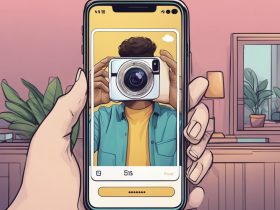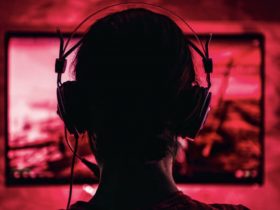In today’s digital age, communication has become easier than ever before. But with increased connectivity comes a need for privacy and security. One way to manage this is through the blocking feature on smartphones. Blocking allows users to prevent specific contacts from reaching them through calls, texts, and other forms of communication. Both Android and iPhone devices come with their own unique blocking features, making it possible for users to maintain their desired level of privacy.
Blocking someone is a personal choice and can be done for various reasons. However, it may leave you wondering if someone has blocked you, especially when you’re using an iPhone to communicate with an Android user. In this article, we’ll explore the reasons people might block others on their smartphones, the differences between Android and iPhone blocking features, and how to know if an Android blocked you on iPhone.
Reasons for being blocked on smartphones
There are multiple reasons why someone might choose to block you on their smartphone. It could be due to a personal disagreement, the end of a relationship, or simply wanting to minimize distractions. Some people block numbers from unknown sources to avoid spam or telemarketing calls. Others might block someone to prevent harassment or unwanted communication.
It’s essential to understand that being blocked doesn’t necessarily mean you have done something wrong. People have different communication preferences and boundaries, and it’s essential to respect those differences.
The difference between Android and iPhone blocking features
Android and iPhone devices have unique blocking features that enable users to manage their communication preferences. While both platforms allow users to block specific contacts, there are some differences in how blocking works on each platform.
On Android devices, the blocking feature is typically accessible through the Phone or Messages app. Users can block specific contacts or numbers, preventing them from calling or sending text messages. Blocked callers will be sent straight to voicemail, and their text messages will not be delivered.
On the iPhone, users can block contacts through the Settings app, under the Phone, Messages, or FaceTime sections. Similar to Android, blocked callers are sent to voicemail, and their text messages are not delivered. However, unlike Android, iPhone users can also block contacts from reaching them through FaceTime.
It’s important to note that blocking features may vary between Android manufacturers and models. Some Android devices come with more advanced call-blocking features, while others may have limited options.
How to know if an Android blocked you on iPhone: signs and symptoms
Figuring out if an Android user has blocked you on their iPhone can sometimes be tricky. There are no definitive signs that indicate you’ve been blocked, but there are some common symptoms that you might experience if this is the case. Here are a few signs that may indicate an Android user has blocked you on their iPhone:
- Calls go straight to voicemail: If your calls consistently go straight to voicemail without ringing, it could be a sign that you’ve been blocked. When an Android user blocks an iPhone user, their calls are typically sent directly to voicemail.
- Text messages are not delivered: If you’re sending text messages to an Android user and they’re not being delivered, it might be another sign that you’ve been blocked. Blocked iPhone users will not receive a delivery receipt for their text messages sent to an Android device.
- No response to communication attempts: If you’ve tried reaching out to the Android user through various communication methods without any response, it could be another indication that you’ve been blocked.
Keep in mind that these signs are not definitive proof that you’ve been blocked. There could be alternative explanations for these communication issues, which we’ll explore in the next section.
Test methods to confirm if you are blocked
Before jumping to conclusions, it’s essential to rule out other possible reasons for communication issues. Here are a few test methods you can use to confirm if you’ve been blocked by an Android user on your iPhone:
- Call from another number: Try calling the Android user from a different phone number. If the call goes through without any issues, it’s possible that your primary number has been blocked.
- Send a test message: Send a test text message from a different phone or messaging app. If the message is delivered successfully, it could indicate that your iPhone number has been blocked.
- Check social media: If you’re connected with the Android user on social media platforms, check to see if you’ve been blocked there as well. If you’re blocked on multiple platforms, it’s more likely that the person has intentionally blocked you.
Remember that these tests are not foolproof, and there could still be other explanations for communication issues.
Alternative reasons for communication issues
Aside from being blocked, there could be several other reasons for experiencing communication issues with an Android user on your iPhone. Some alternative explanations include:
- Network issues: Sometimes, network issues can cause calls to be redirected to voicemail or text messages to be undelivered. Before assuming you’ve been blocked, consider checking for any network problems.
- Phone settings: The Android user may have inadvertently enabled settings that prevent calls or texts from coming through, such as “Do Not Disturb” or “Airplane Mode.”
- Device issues: The Android user’s device may be experiencing technical issues that affect their ability to receive calls and texts.
- Number change: The Android user may have changed their phone number, resulting in communication issues.
Before assuming the worst, consider exploring these alternative explanations for your communication problems.
How to handle being blocked by an Android user on iPhone
If you find out that an Android user has indeed blocked you on their iPhone, it’s essential to handle the situation respectfully. Here are a few tips for managing the situation:
- Respect their boundaries: Remember that everyone has the right to choose who they want to communicate with. If someone has blocked you, respect their decision and give them space.
- Don’t attempt to bypass the block: Trying to find ways around the block, such as using other phone numbers or messaging apps, can come across as intrusive and disrespectful.
- Reflect on your behavior: Take this opportunity to consider if your actions may have led to being blocked. If you think you may have crossed a line, learn from the experience and be more mindful of boundaries in the future.
Tips for maintaining healthy communication in the digital age
Navigating communication in the digital age can sometimes be challenging. Here are a few tips for maintaining healthy communication with others:
- Be respectful: Always treat others with respect and kindness, both online and offline.
- Communicate openly: If you have concerns or issues with someone, try to address them openly and honestly. Keeping lines of communication open can help prevent misunderstandings and conflicts.
- Set boundaries: It’s essential to set boundaries for yourself and respect the boundaries of others. Communicate your preferences clearly and be understanding of other people’s needs.
- Be mindful of digital etiquette: Remember that digital communication can sometimes be misinterpreted. Be mindful of your tone, language, and the timing of your messages.
Privacy and security concerns related to blocking features
While the blocking feature can be helpful for managing communication preferences, it’s essential to be aware of privacy and security concerns. Blocking someone on your smartphone does not guarantee complete privacy, as there are ways to bypass these features through third-party apps or alternative communication methods.
Additionally, it’s crucial to be cautious when sharing personal information online, even with people you trust. Always be mindful of your digital footprint and take steps to protect your privacy and security.
Conclusion and final thoughts
Determining if an Android user has blocked you on their iPhone can be challenging, but by looking for signs and symptoms and testing alternative explanations, you can get a better idea of the situation. If you do find out that you’ve been blocked, remember to respect the other person’s boundaries and learn from the experience.
Maintaining healthy communication in the digital age requires respect, open communication, and mindfulness. By following these tips and being aware of privacy and security concerns, you can foster positive relationships and stay connected in today’s digital world.







Leave a Reply